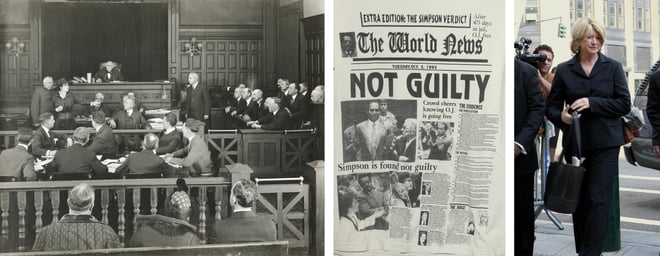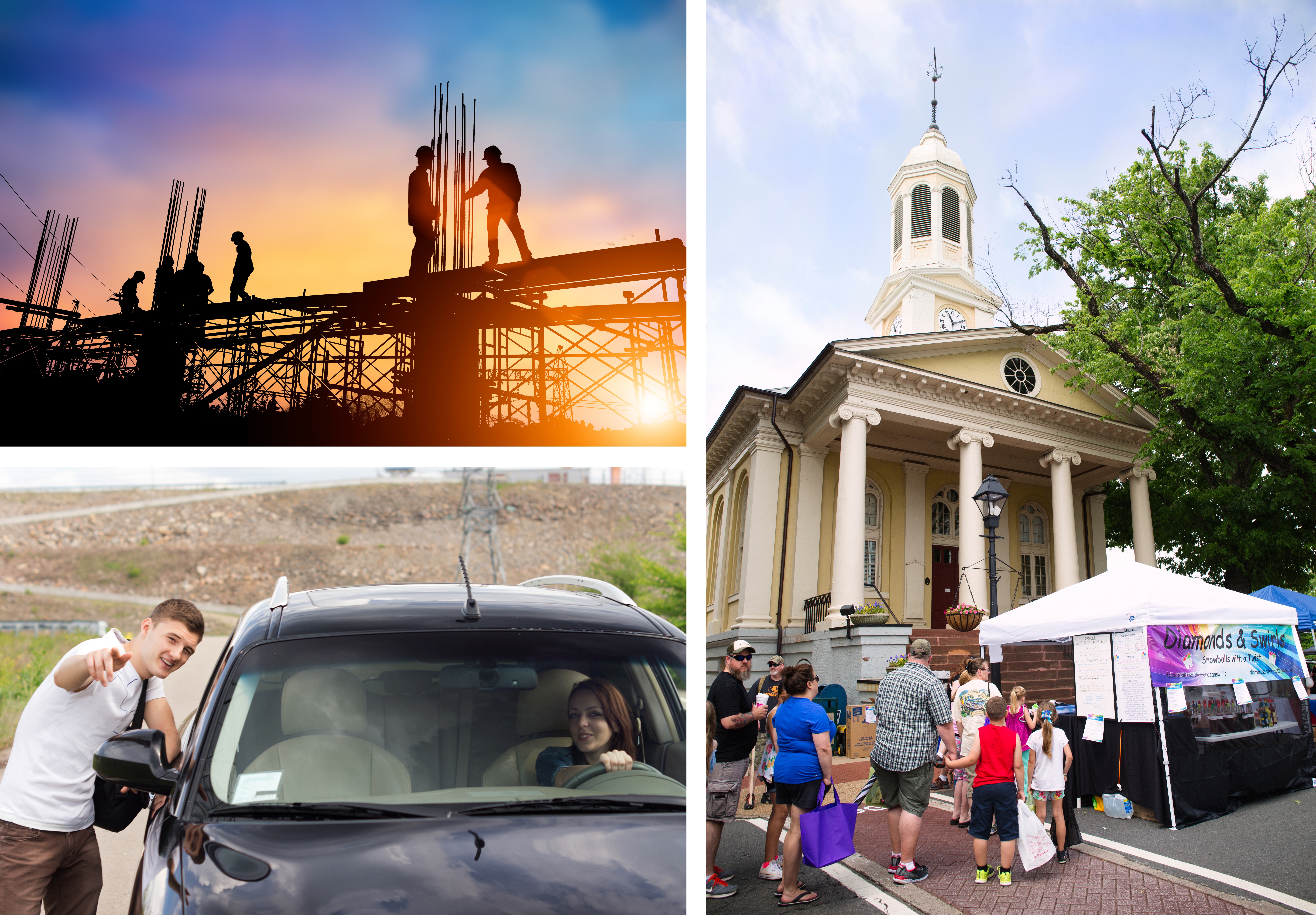We have all been absorbed at one time or another by the drama that takes place inside a courthouse. “To Kill a Mockingbird”, “Perry Mason”, “LA Law,” and countless other popular movies and television programs allow us a glimpse into the inner workings of a courthouse. Real-life courtroom drama – from local news to national spectacles like the OJ Simpson trial – have captivated audiences far and wide. Serious business goes on inside a courthouse, and we all know that. However, as a court planning consultant, I have been fortunate to gain an understanding of courthouses that goes beyond the courtroom walls. Apart from the architecture, a courthouse is an exciting place to be and every aspect must be considered during the courthouse planning process. When I enter a courthouse, I get an immediate sense that something critical is going on in the building and I want to be a part of it. But why? What makes me (and so many of us, it seems) fascinated by these special places? I can think of a few things that do it for me…
The History

During the colonial days, American courthouses were modeled after the English town halls and markets, and they were not necessarily very majestic. They were simple structures with a single courtroom located in a one-story building. They became part of daily life as court days tended to be like a bustling market, where the public heard arguments of popular cases. Over time, courthouses have gone through various design transformations as society has changed and security needs have increased. Now I could spend this entire blog talking about the history of courthouse design – a riveting topic itself – but that’s not the history I am talking about this time.
What gets me going is that almost always, an interesting story can be told about a courthouse. For example, during a courthouse assessment in California a few years ago, I was fascinated to learn the courthouse was one of the only structures to survive the great earthquake of 1906. I have been in courthouses in New York and Philadelphia where America’s future was shaped, as well as courthouses where debates have taken place that have been important to local communities and the nation. It is so cool to know that I have stood in courtrooms where famous cases have been tried, and ones that have been used as movie sets. There is something very personal about things like that. Just knowing some of the most influential people (and some very bad people…) have been in a building I am in is enough to give me goosebumps!
I have seen boxes and boxes of closed case files that were so relevant at one time but now relegated to basement storage areas. If only they could talk! Thinking about the countless hours spent preparing the evidence contained in those boxes is so captivating and has often prompted me to look up the cases to see what all the fuss was about. No matter what interesting tidbit I hear or see as I am walking through a courthouse, it makes me want to learn more about the courthouse’s history.
The Community

When I started out working as a courthouse consultant nearly 20 years ago, I didn’t quite realize the impact a courthouse has on a community. Many communities look at the construction of a new courthouse as an opportunity for growth. A new courthouse can enliven a downtown. During construction, not only are jobs created to build the courthouse, but people start to see how the area will improve, and they want in. Restaurants, housing, and other community services that cater to the new influx of people begin to pop up around the area. Courthouses are often the focal point of the city’s civic center and other government agencies begin to relocate to be near it. They are landmarks used to define directions and referenced in the daily news. Everyone in town knows where it is. How many times have you heard directions that include the phrase: ”when you see the courthouse...”? That’s what I thought.
It is also exciting to see communities take advantage of a courthouse that is in a prominent location in the city. There are courthouses in small town squares and large central business districts, and their position can present wonderful opportunities for the local community. I have seen many courthouses offer space in their public areas to display works by local artists. There are also courthouses designed with outdoor public spaces that are used for festivals, concerts, and craft fairs. Courthouses certainly play a vital role in the development of a community.
The People
I am also always fascinated by the variety of people that are in a courthouse! People whose lives are at stake are there, along with those who are there to determine that fate. Others come just to watch the process! Attorneys cram the hallways awaiting the chance to debate the law, or to ensure a person’s right to a fair trial. There are court staff members shuffling papers to keep the business of the court rolling – processing judicial orders, accepting attorney filings, and collecting fees. Behind the scenes, a network of secure corridors and cellblocks snake through the courthouse where law enforcement officials deal with the dangerous task of processing and moving prisoners. In my job, I get to meet them all and hear what is troubling them.
Judges: My rapport with judges has always been special to me. The best part is that I don’t know very much about the law, or writing briefs, or filing motions, and they typically don’t know much about space planning. That means we both need each other! Our discussions are usually lively ones about how their space is affecting their functionality, and we toss around planning options that could help improve operations. Invariably, the judges have an opinion about the overall condition of the courthouse and usually have grand ideas about how to improve things. It is my job to sort through all of the opinions and quickly determine how each one could affect other parts of the facility. Most of the time a consensus is reached that is beneficial to all court users.
Law Enforcement: Typically, the most vocal participants in the planning discussions are law enforcement personnel. I probably enjoy this interaction the most as their job is so critical to the success of a courthouse. The inherent danger that comes with securing a facility and dealing with prisoners is very exciting. From building surveillance, to security screening, to moving prisoners within the courthouse, they are always thinking a step ahead of potential security conflicts. The dialogue between law enforcement and the planning team is extremely important. To be involved with such critical decisions that contribute to the safety of the judges, staff, public, and prisoners is very satisfying.
The Staff: Aside from the attorneys and judges, the people who work for the court are not unlike the typical office worker. A collection of individuals as diverse as those you see on “The Office.” They are responsible for the day-to-day business of the court, including providing judicial support, collecting fees, making copies, and assisting the public. I get to know a few of them a bit as I conduct interviews and assess their facilities. Some people I have met are very serious and others are a bit quirky, like the woman I met who wears a different Christmas sweater all year long! One thing they all have in common – they know their job and they genuinely care about the judicial process. I cannot help but want to get it right for these people. I enjoy helping them define their space needs, and I get a thrill out of working with them to come up with solutions to help achieve their goals.
Verdict – All of the Above Make Each Courthouse Special
I am realizing more and more that I can’t put my finger on any one thing that makes courthouses so special for me. Whether it be federal, state, or local, every courthouse I have visited has taught me something about its history, its community, and the people who work there. Maybe that is enough of an answer.




.jpg)
.jpg)
.jpg)
.jpg)
.jpg)
.jpg)


-1.jpg)
.jpg)
.jpg)

